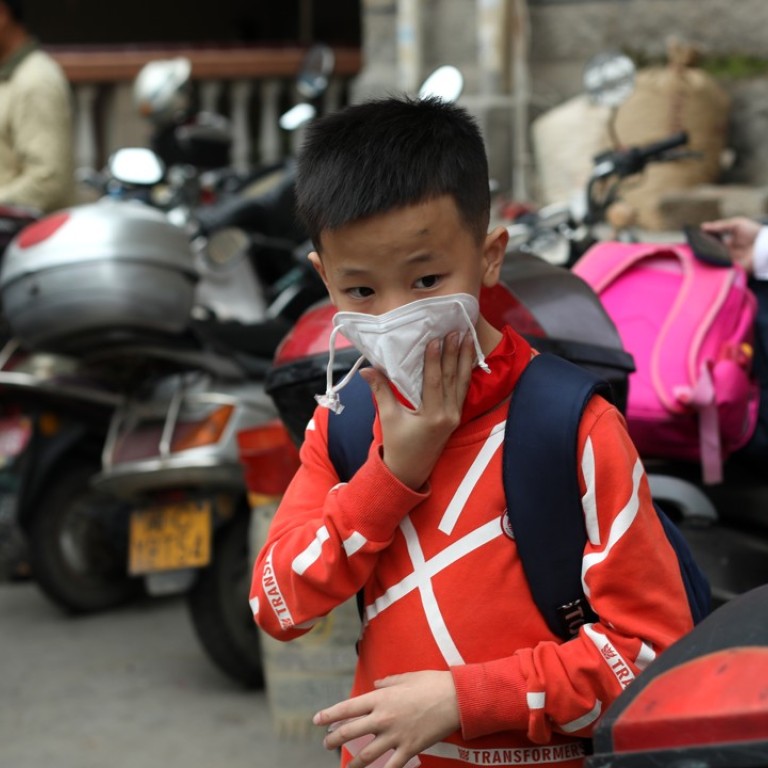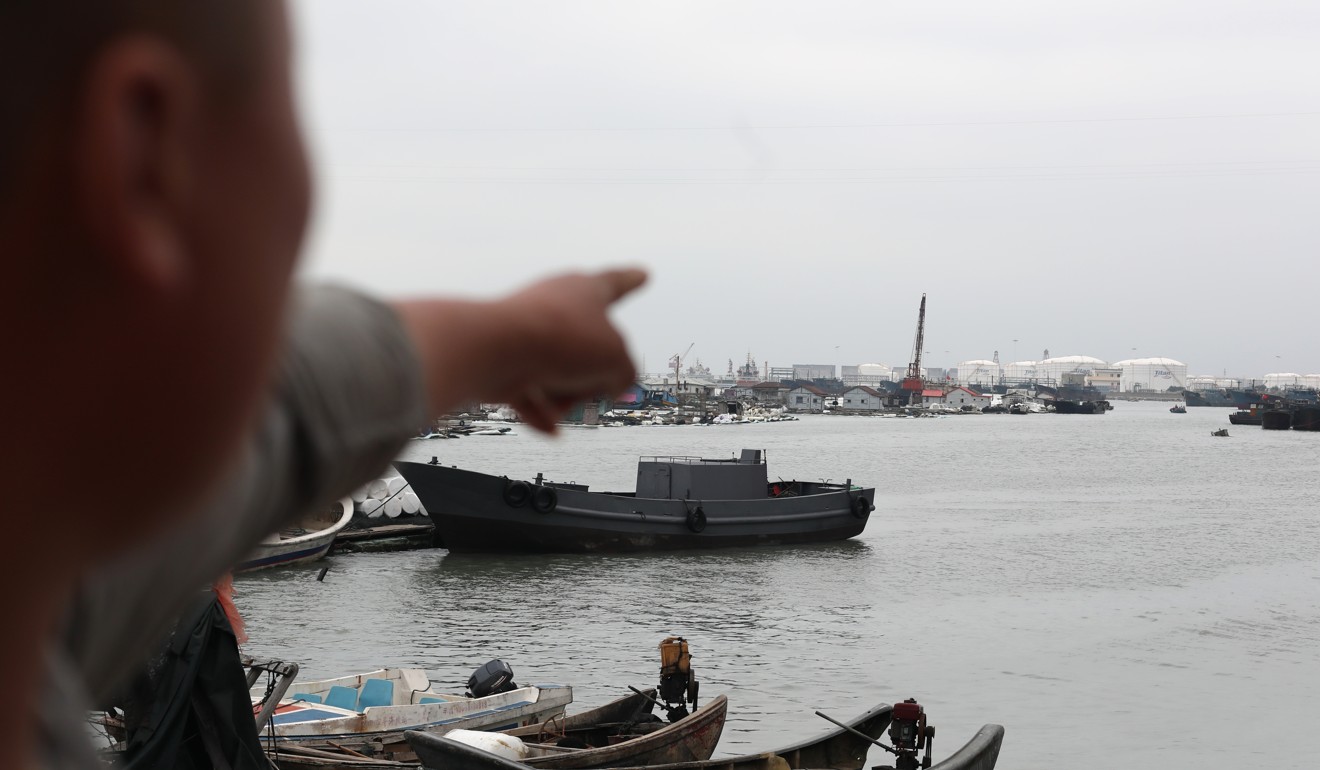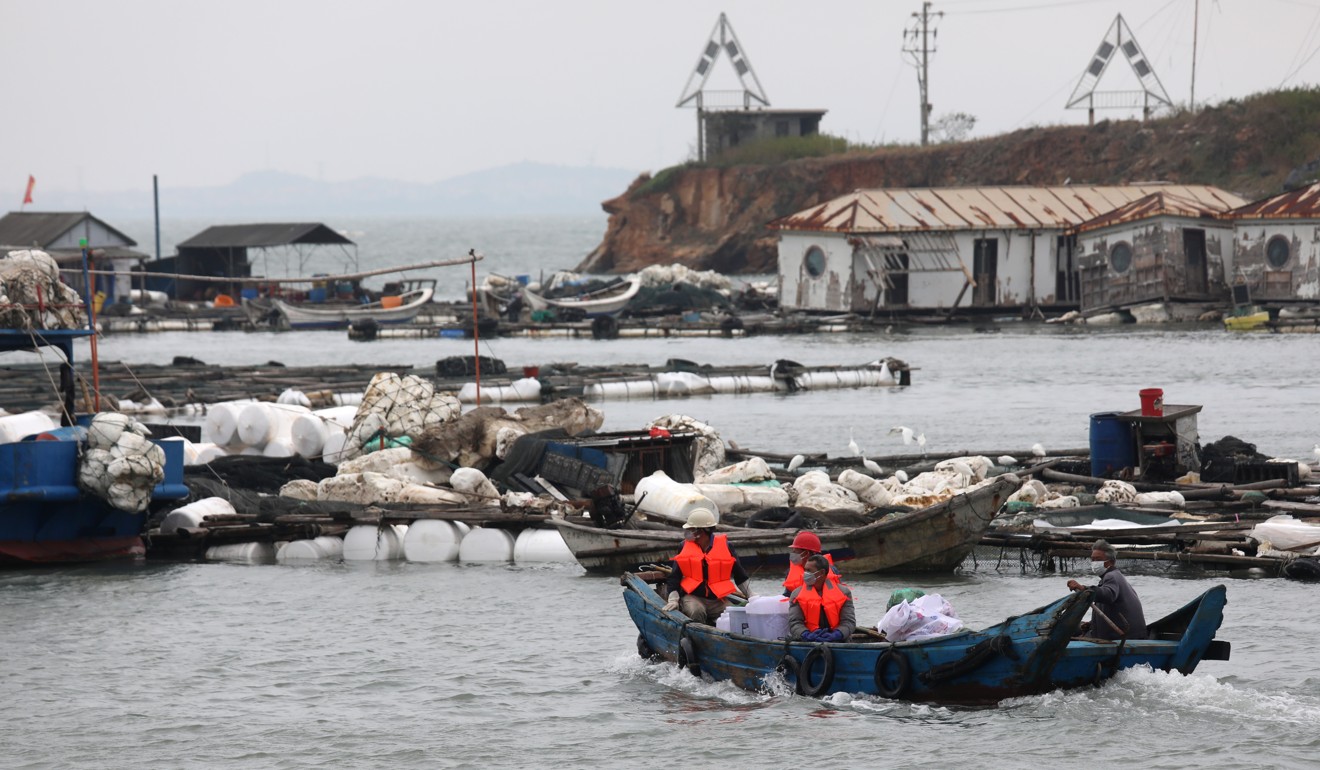
Locals fear Chinese officials more concerned with cover-up rather than clean-up after chemical spill
- Residents in Quanzhou in Fujian province complain that they have not been given the full story after a toxic chemical spill on Sunday
- Locals fear health risks are being downplayed after authorities said the clean-up was ‘basically complete’ on the day of the leak
Distrust of the authorities hangs heavy in the air in Quanzhou after the response to a toxic chemical spill last weekend left many residents wondering whether officials were more concerned about plugging information about the leak than tackling the problem.
Locals in the coastal city in the southeastern province of Fujian fear that the leak of the substance called C9 was more dangerous than they had been told, while complaining of a shoddy clean-up operation that has led to children becoming ill because they are being told to continue to go to school.
“Based on the very visible oil stains in the fish farms and nearby seawater, I think tens of tonnes of C9 were leaked,” Xiao Renhong, a resident of Xiaocuo village, said on Friday.
However, the local authorities in Quangang district said only seven tonnes of C9 had leaked when a connecting tube broke as the chemical was being transferred between the wharf and a vessel early on Sunday morning.

The first thing residents knew about it was when they were woken by a strong smell in the morning. But by Sunday evening the local environment protection bureau announced that the clean-up operation was “basically complete” and chemical levels in the affected area were within safe limits.
Two days later, the bureau even announced the water quality was now suitable for fish farming.
But late on Thursday the local government admitted that 52 people had been officially treated in hospital for symptoms – including nausea, dizziness or pneumonia – after inhaling the chemical.
Of those, they said, 42 had been “cured” and sent back home while 10 remained in hospital for further treatment.
This was the first time the authorities had admitted that people had needed medical treatment following the spill.
However, a worker at Quangang Hospital, surnamed Wu, said that at least a dozen patients who had inhaled excessive amounts of C9 were still being treated there.
Some residents in the district, where chemical manufacturing and aquaculture are two of the biggest industries, complained about the authorities’ initial response to the spill, while others expressed concerns about the ongoing health risks.

“We called the police on Sunday morning after smelling a strong odour and seeing the yellow oil floating on the sea, but the bureaucrats just wouldn’t listen,” said Xiao Jiangong, a villager in Xiaocuo. “The police said we should call the Maritime Safety Administration, which in turn directed us to the local environmental authorities.”
“The town officials said it was up to us to save ourselves and our fish farms,” Xiao said. “They sent some oil absorbent pads but did not begin cleaning the tainted sea areas until Thursday.”
Xiao also said that his uncle had been suffering pain in his hands after he rushed to save the family’s fishing rafts from the chemical on Sunday morning.
Chinese fishing village fears contamination cover-up after chemical leak
“At first they did not even tell us the chemical was C9,” he said.
“So we thought it might be some regular gas, which is not uncommon as we are surrounded by chemical factories.
“I would never have let my uncle risk his life to save the rafts if I knew the chemical was toxic,” he said, adding that the smell had caused even perfectly healthy young adults to become nauseous.
One local woman, Xiao Lili, said she believed the air was still toxic and expressed concern that local children were still being told to attend classes despite the health hazards.
“I sent my daughter to a nearby city the day after the leak, but her teacher called asking her to go back to school as the midterm exam is approaching,” Xiao Lili said. “The school authorities won’t let the kids have a break in order to avoid the toxic air.”

Her nine-year-old daughter, Xiao Xinyuan, became sick and started vomiting after spending a morning at Xiaocuo Primary School.
Xiao took her daughter to hospital, where she said other children were being treated for similar symptoms.
“The town officials said they were going to fix the situation,” she said. “I don’t know about that. But at least they should suspend classes so that the kids can stay indoors.”
One seventh grade pupil said fewer than 10 pupils out of 30 had showed up for the midterm exam on Friday.
Chinese regions accused of faking efforts to curb environmental problems
Other residents, such as fisherman Xiao Qingjian, were concerned that they might face a long and difficult battle to win compensation.
Earlier in the week he hired a professional photographer to document the yellow slicks that had affected his fish farm.
He also collected photos and videos taken by fellow villagers and distributed them via social media.
“I notice that sometimes we fail in trying to send information about the leak to friends via WeChat,” he said. “We know our chat groups might be monitored, so I’m keeping all the evidence in thumb drives [to help with any compensation claim].”

